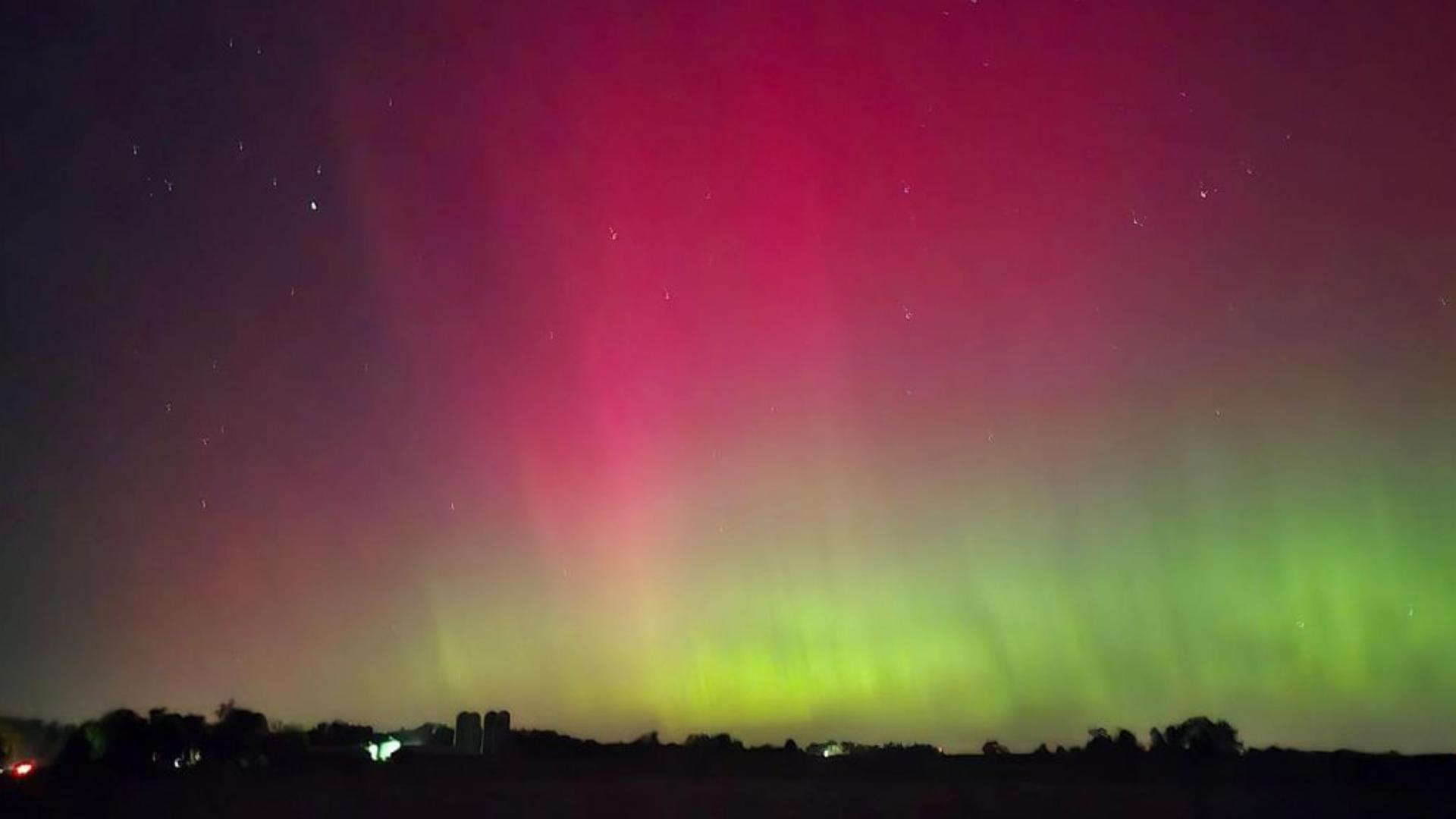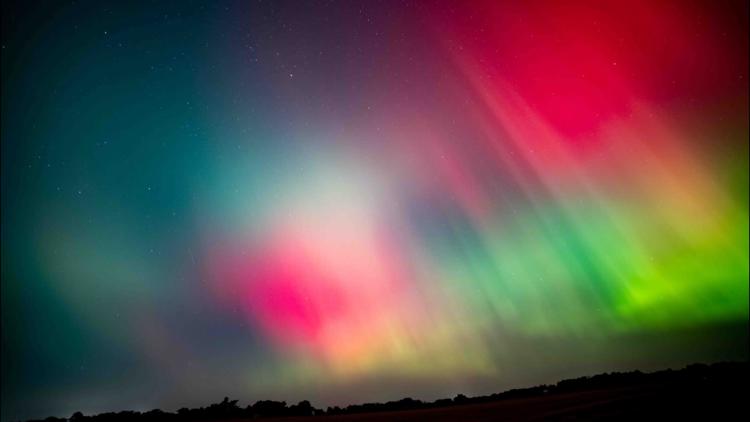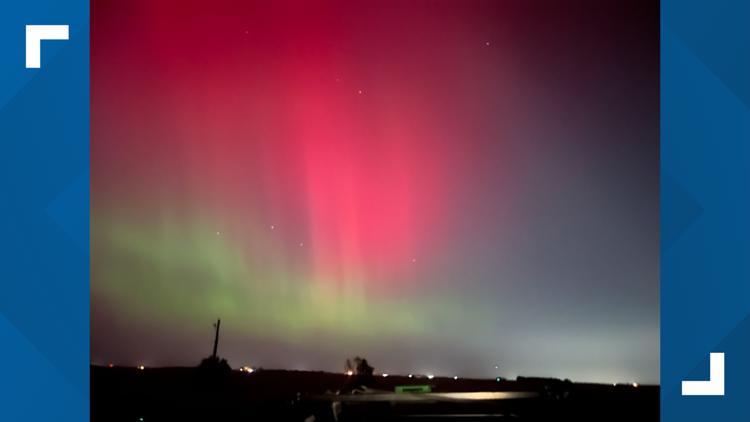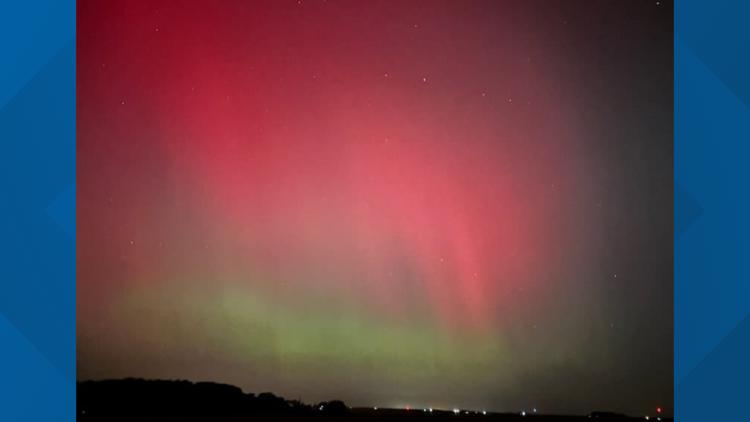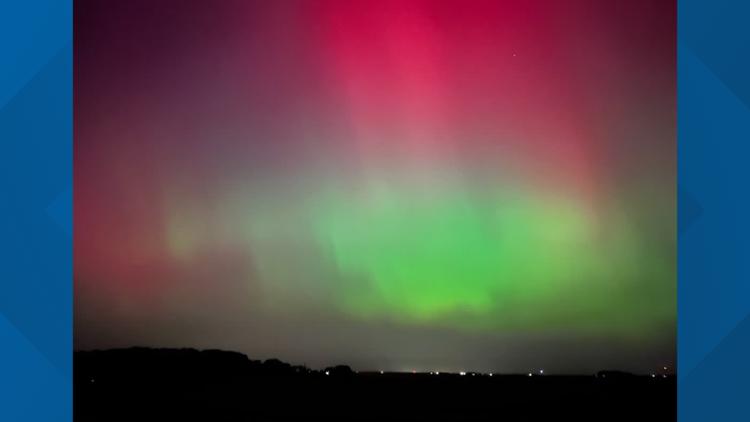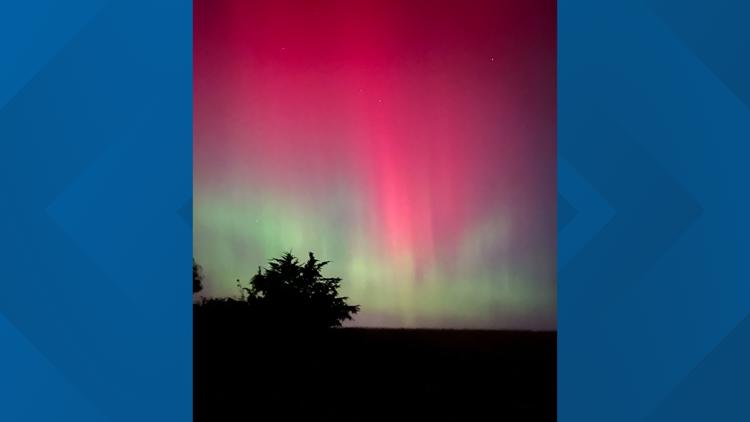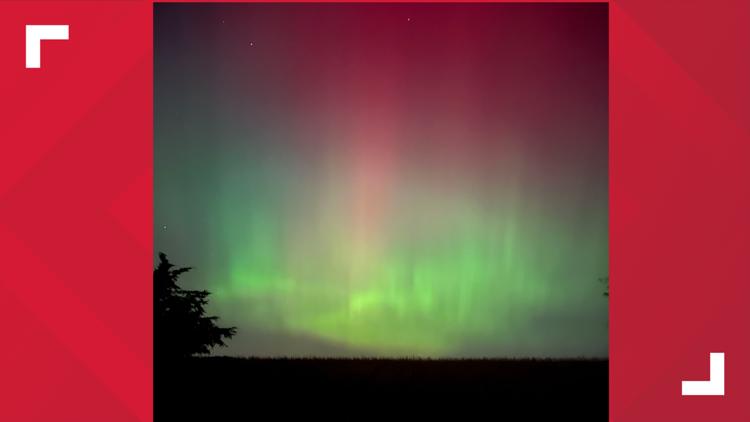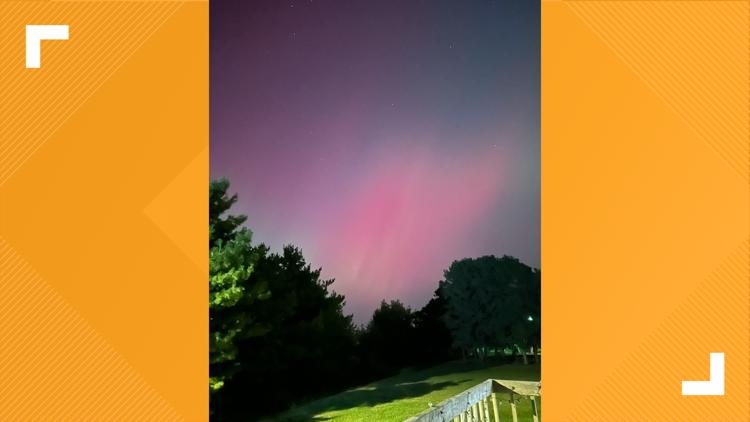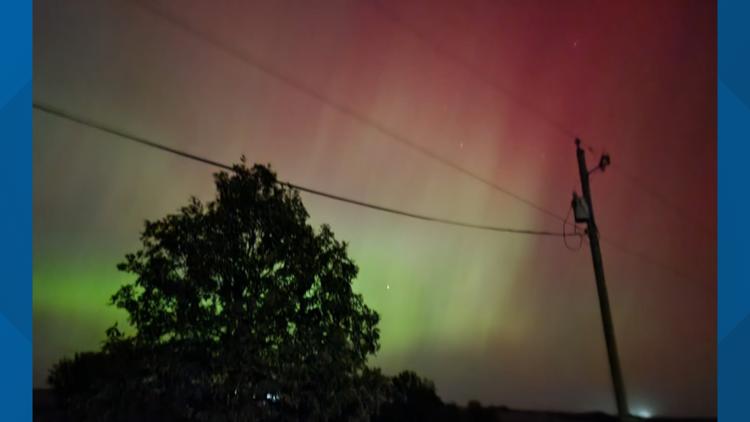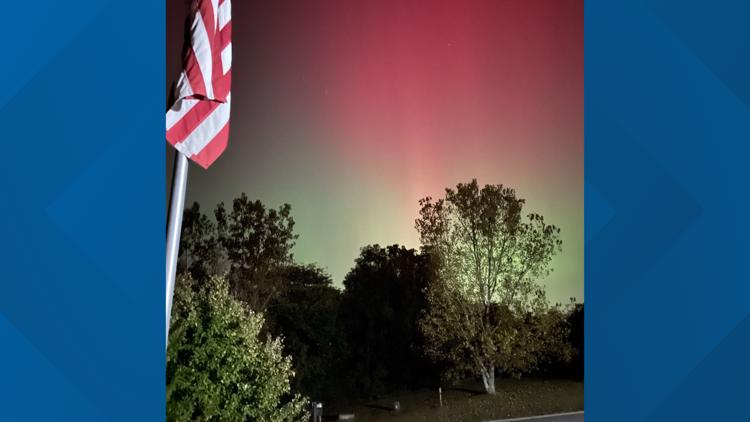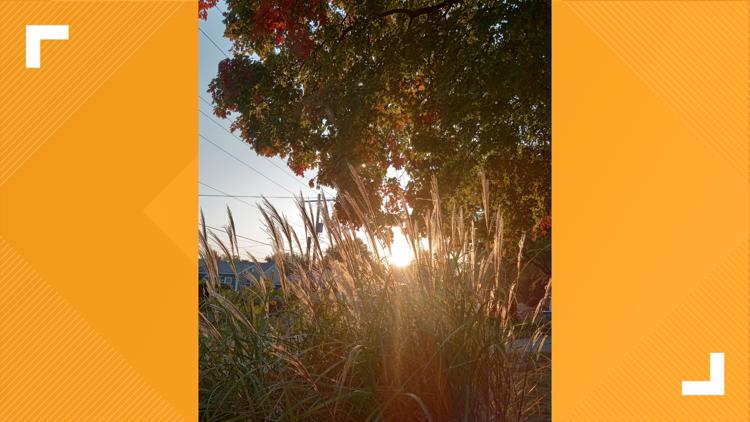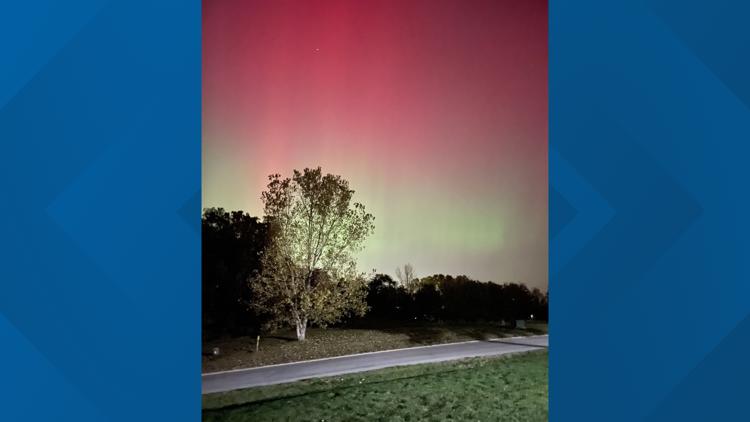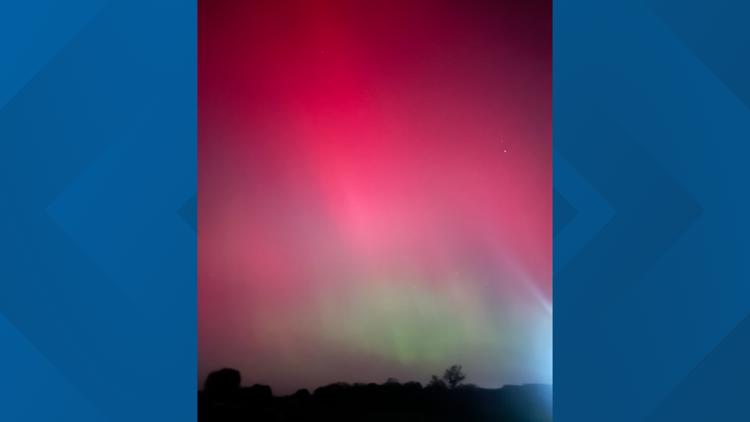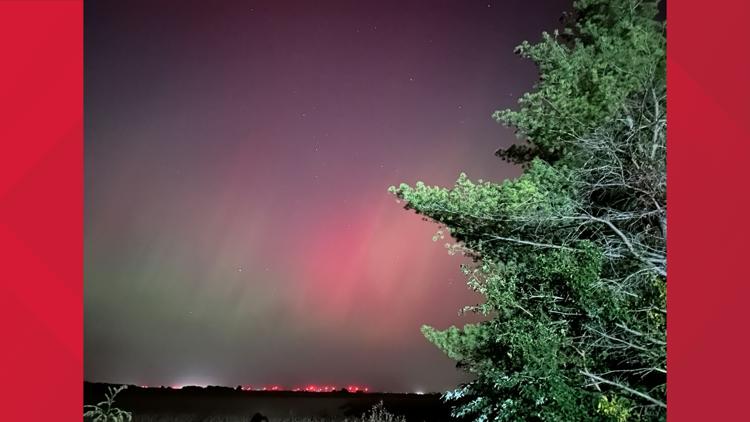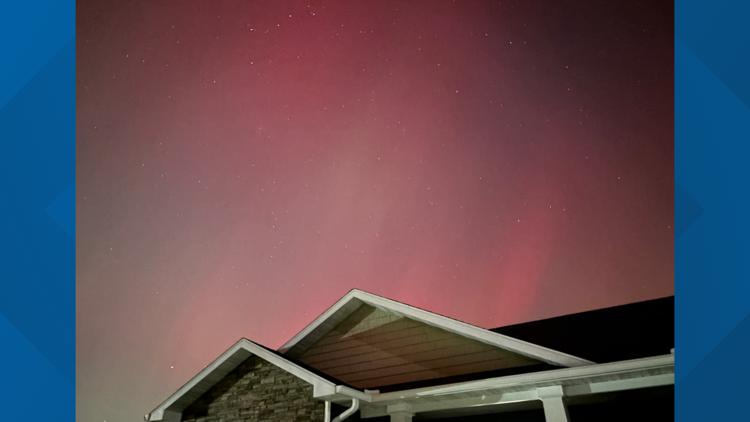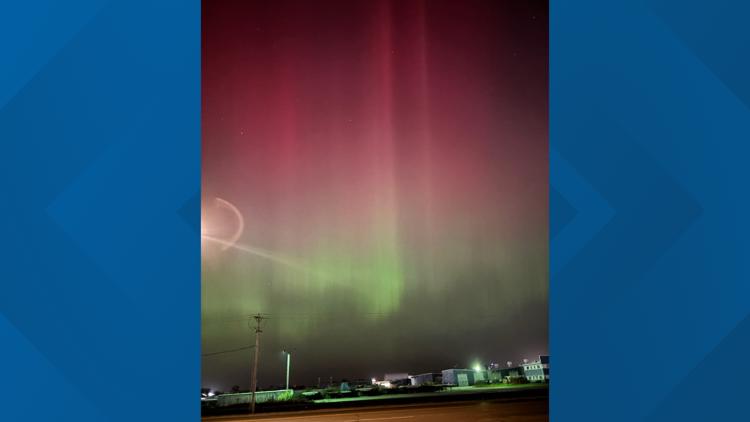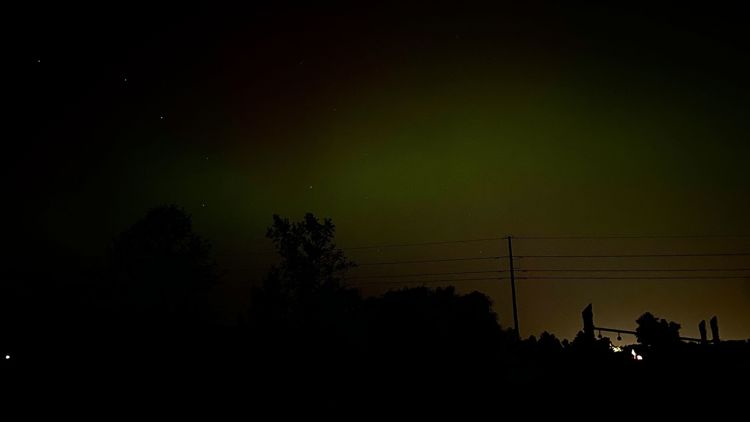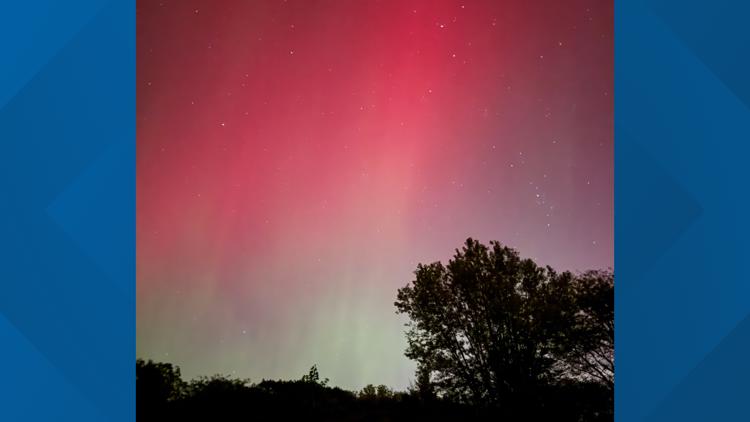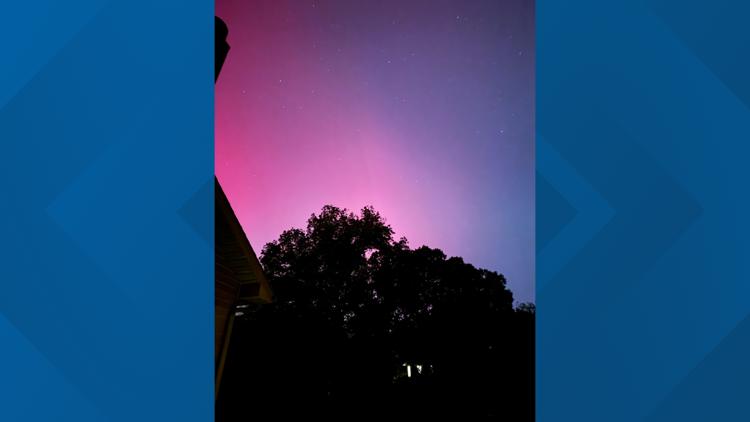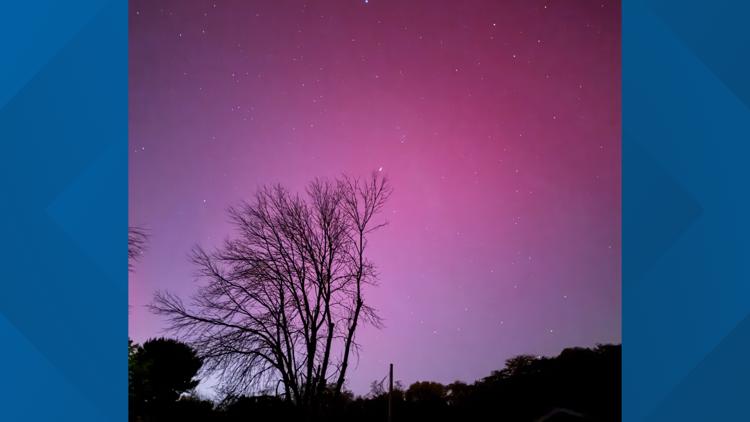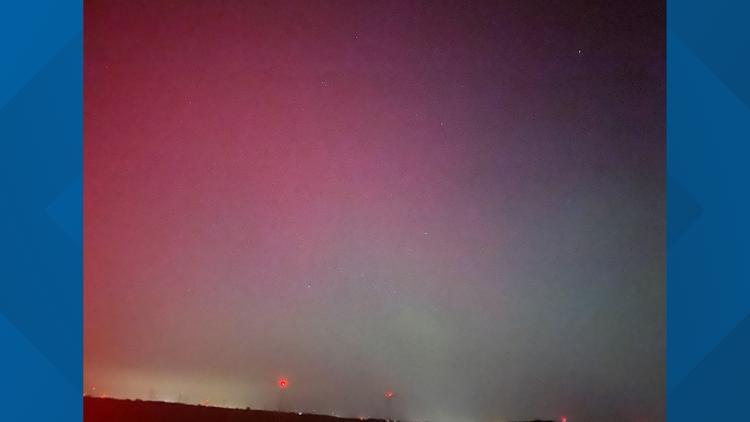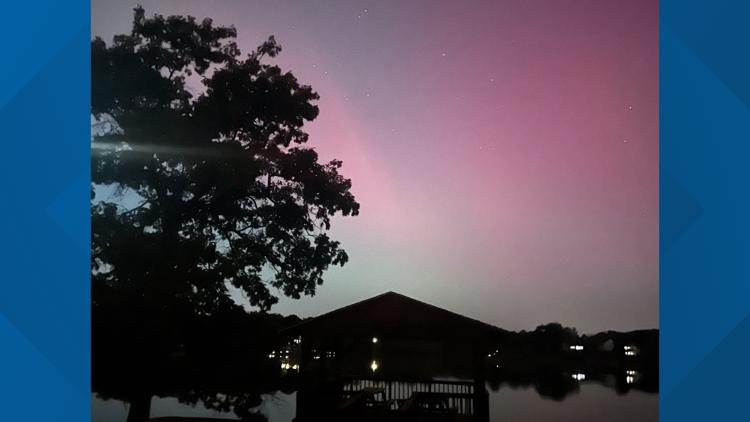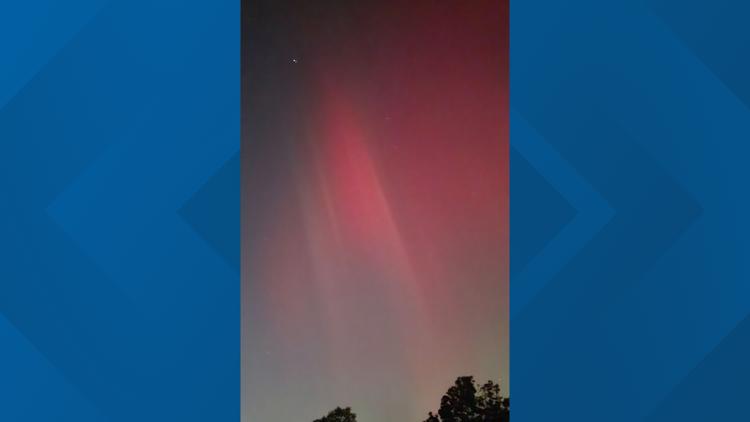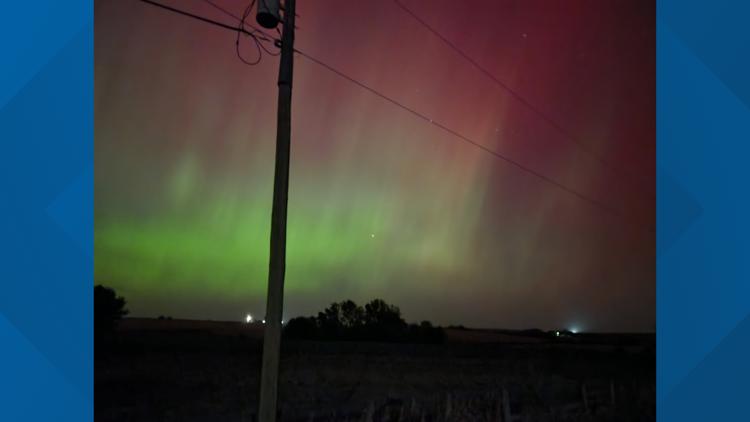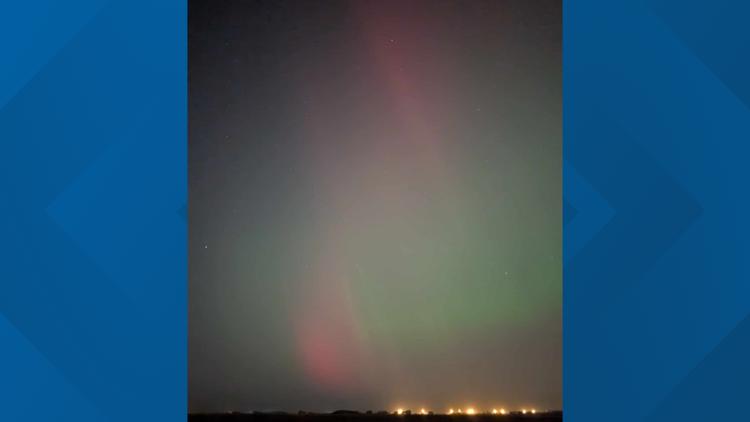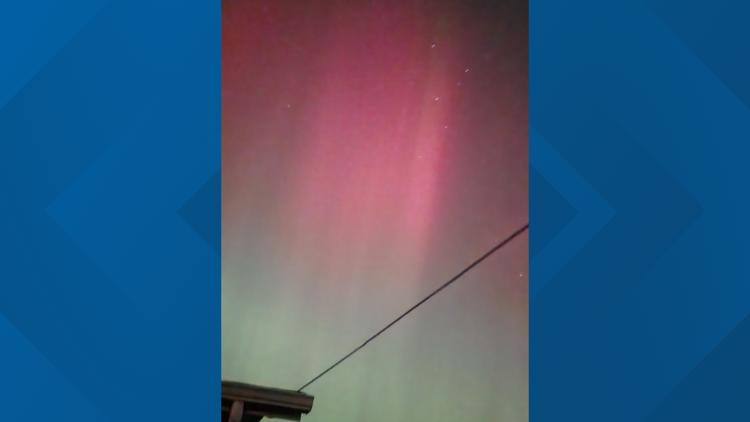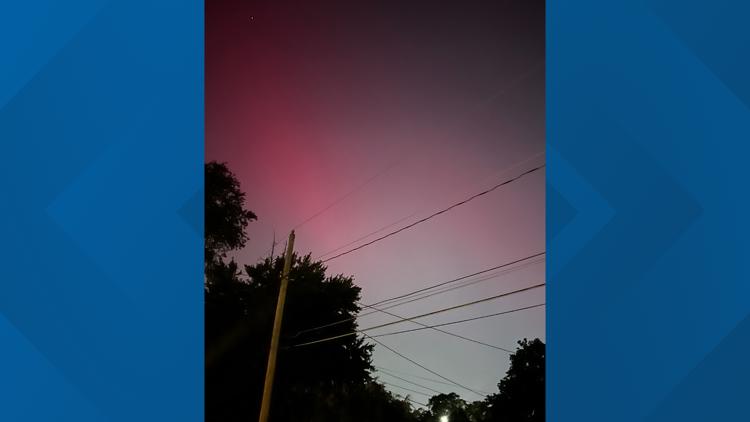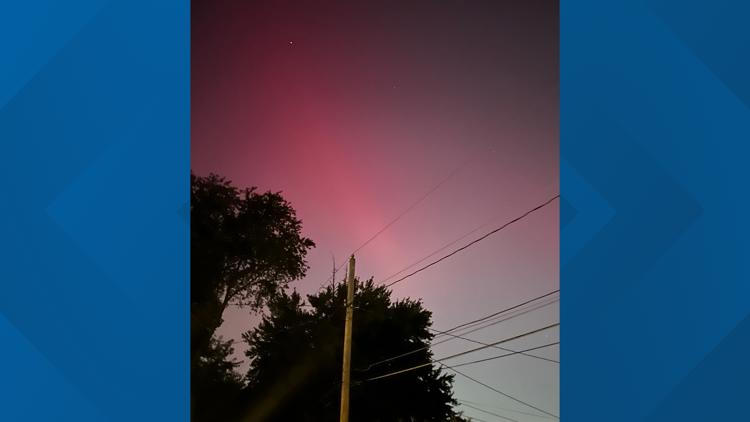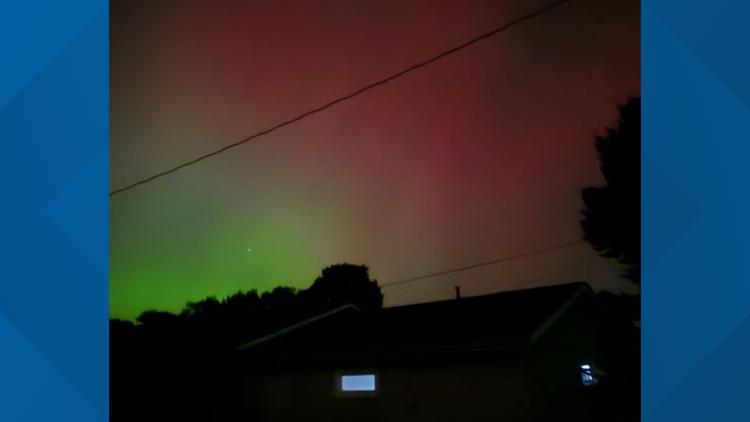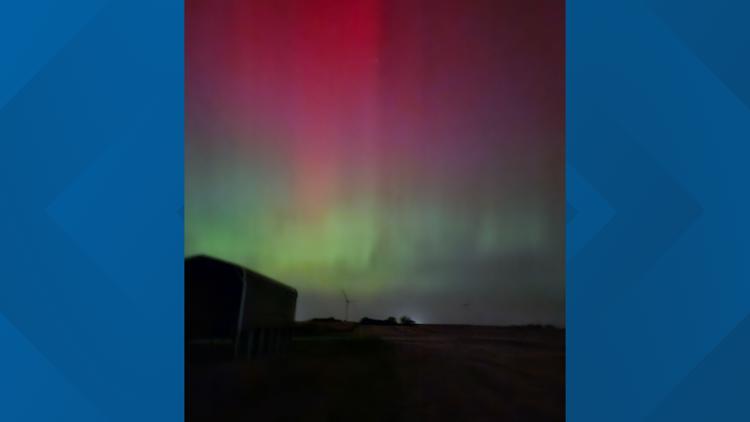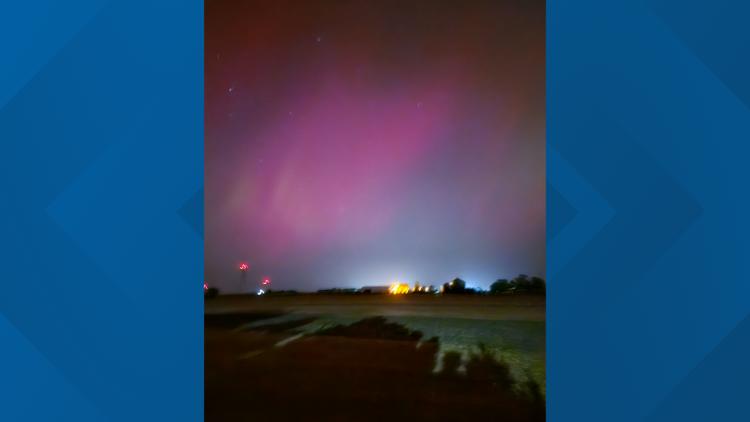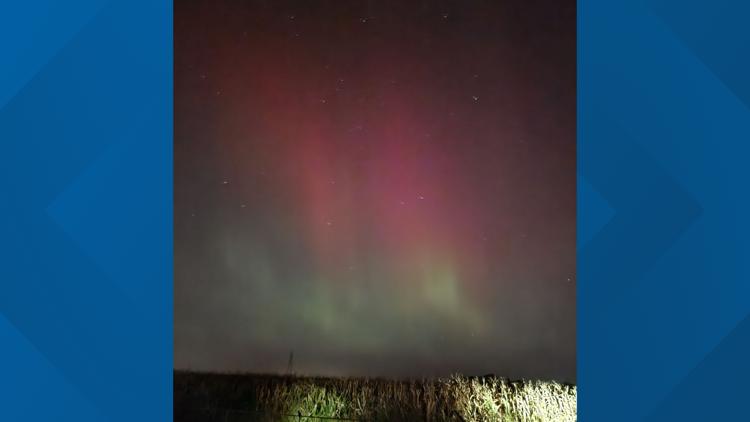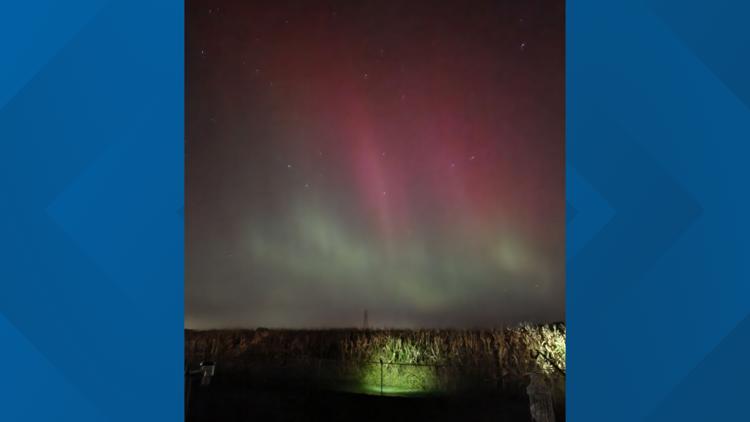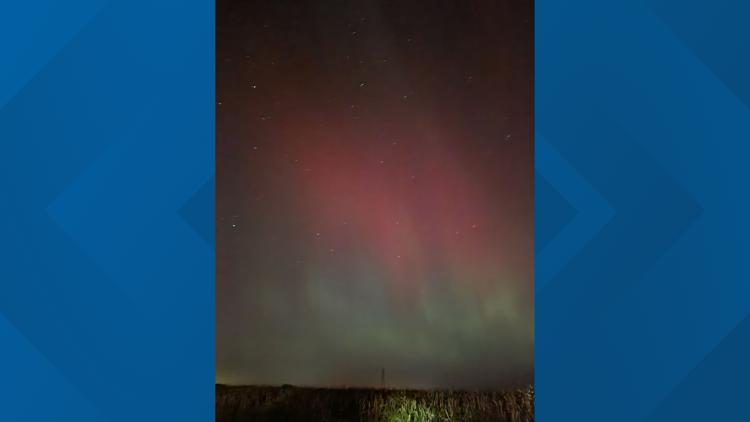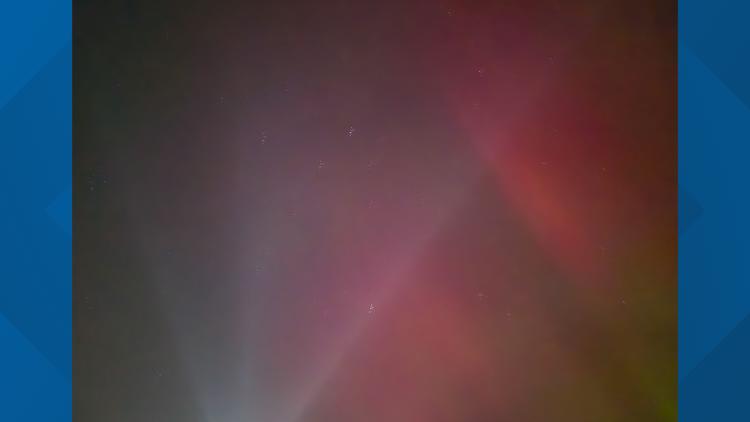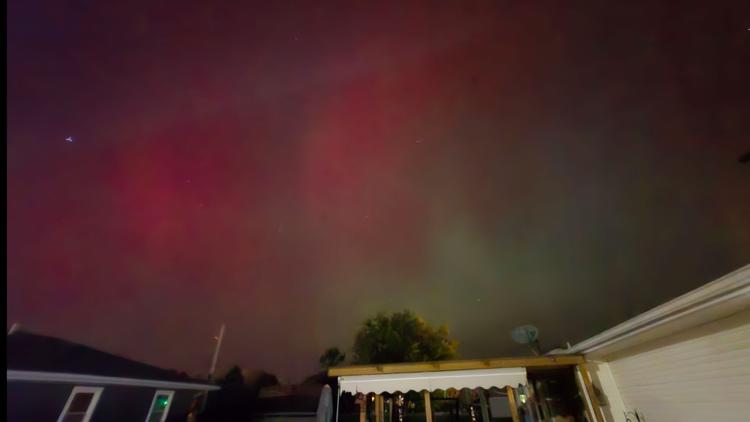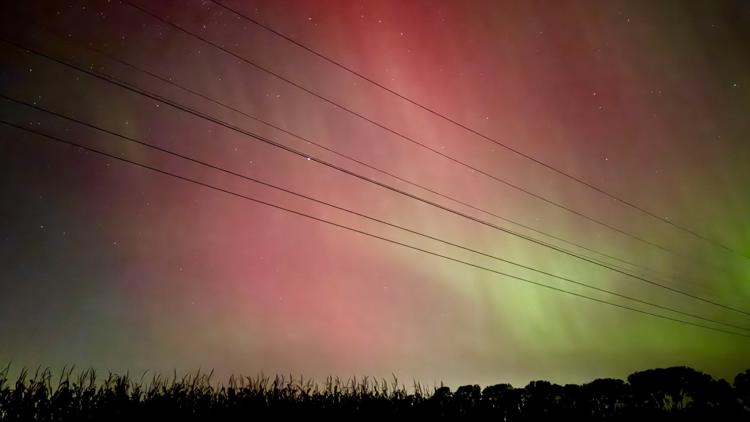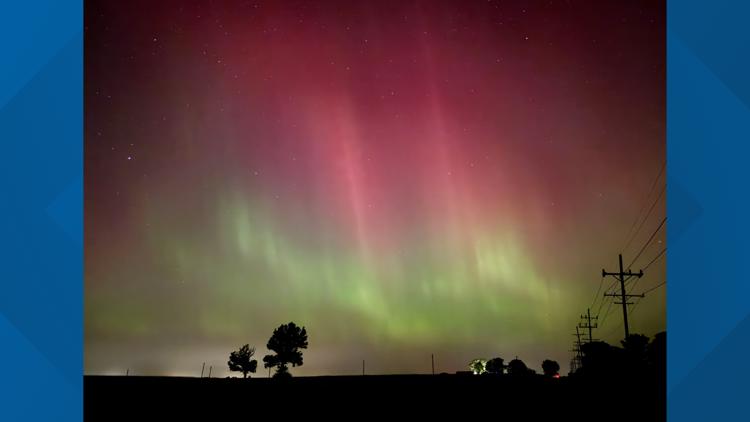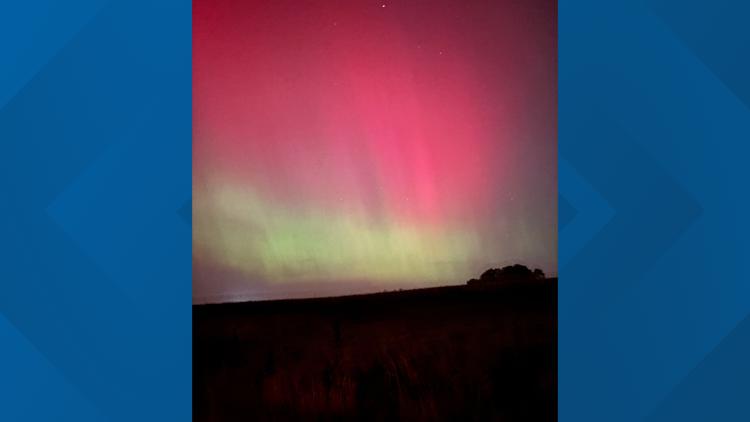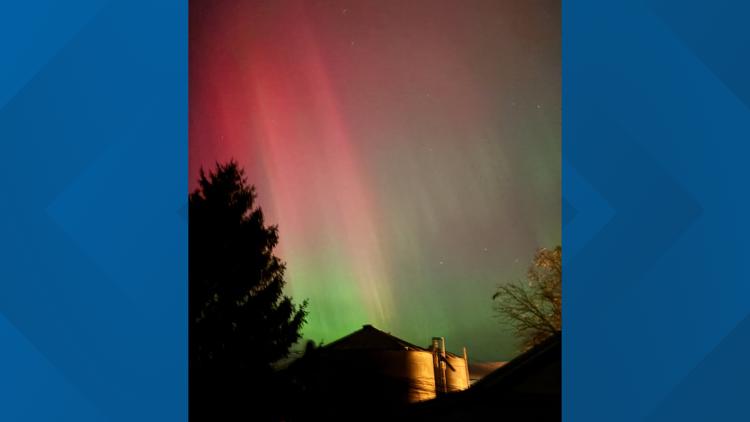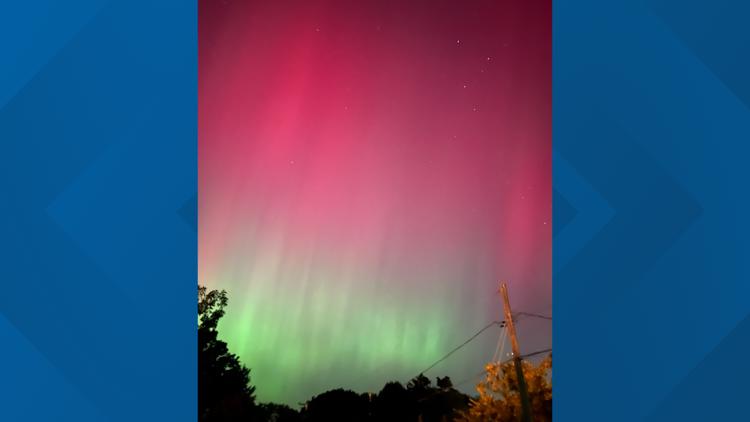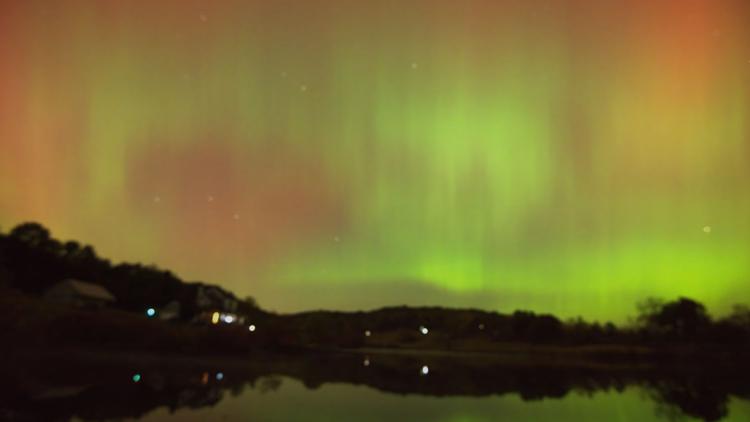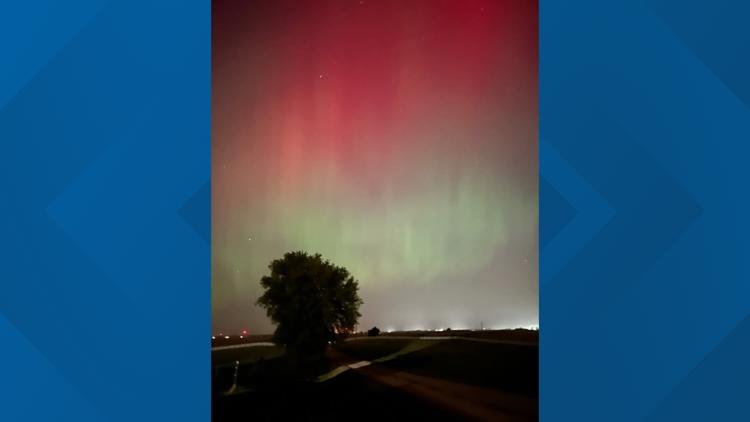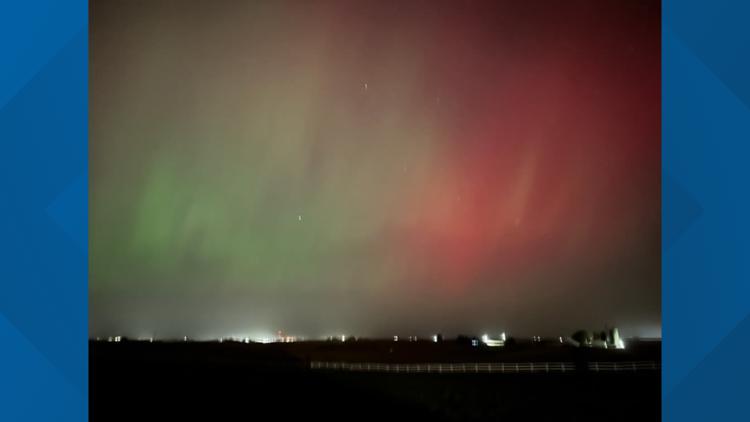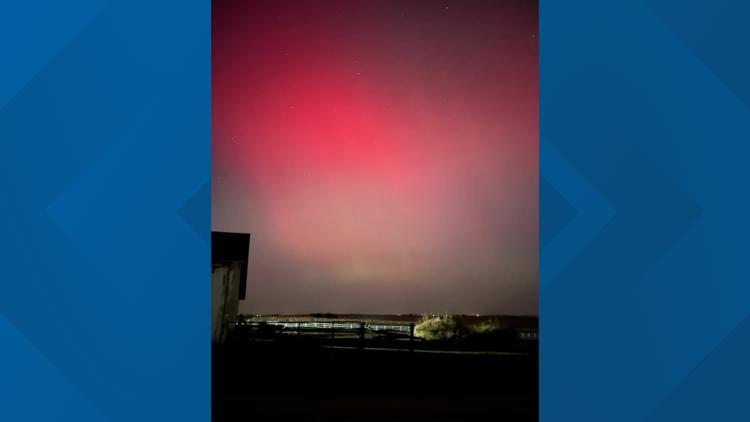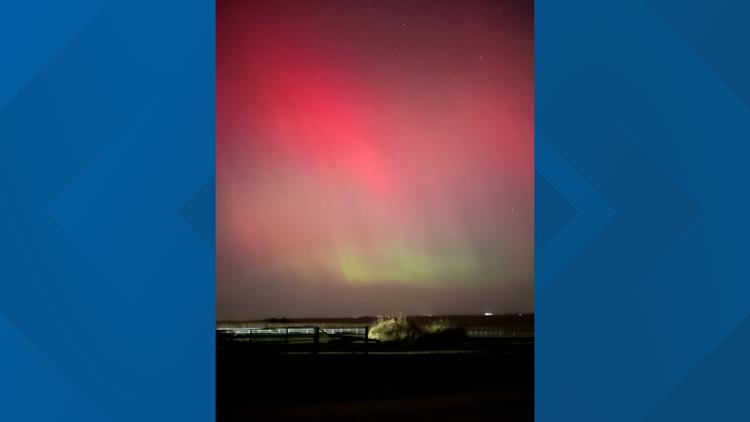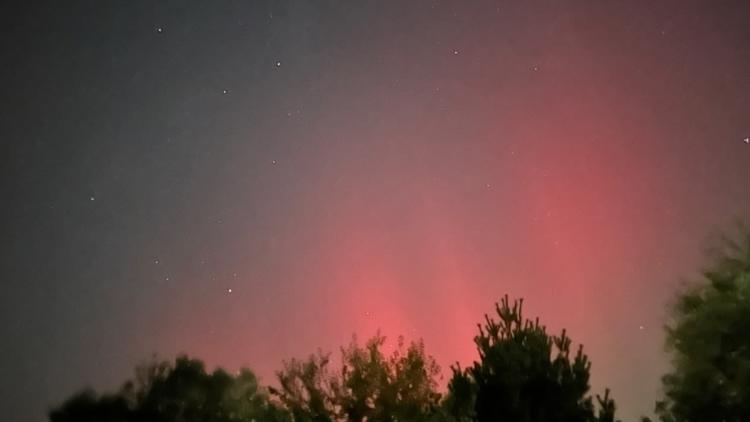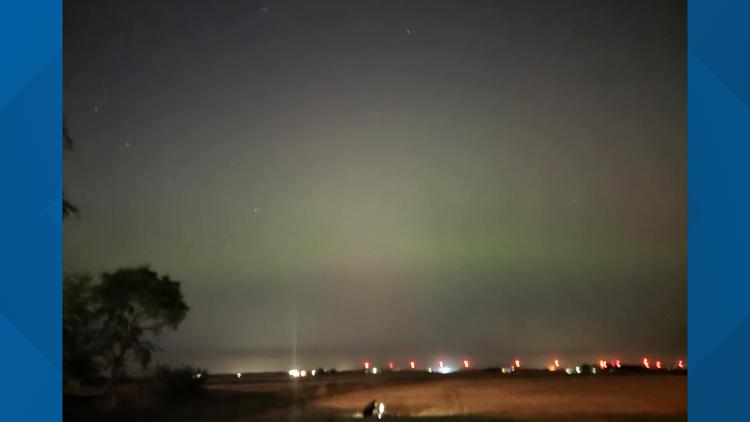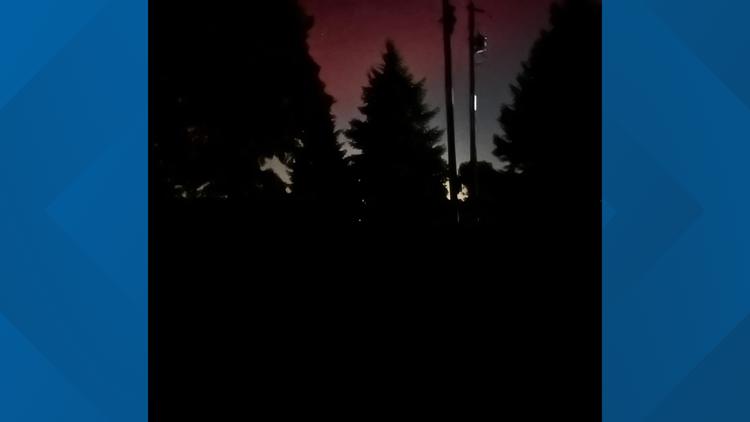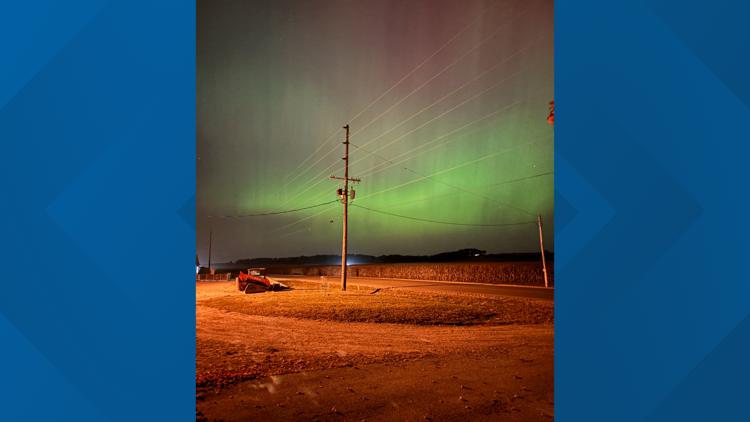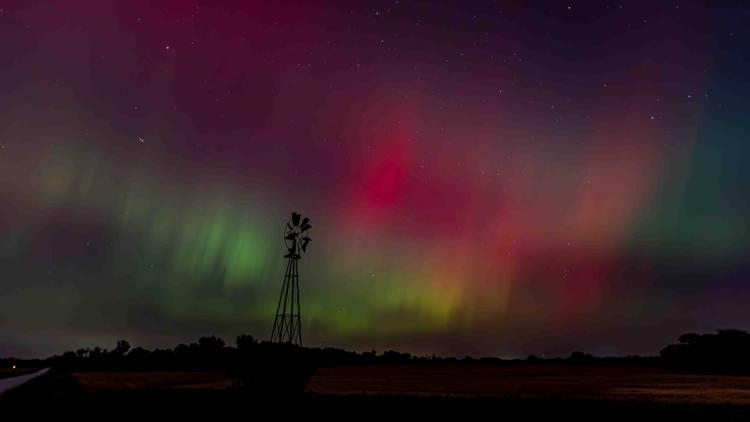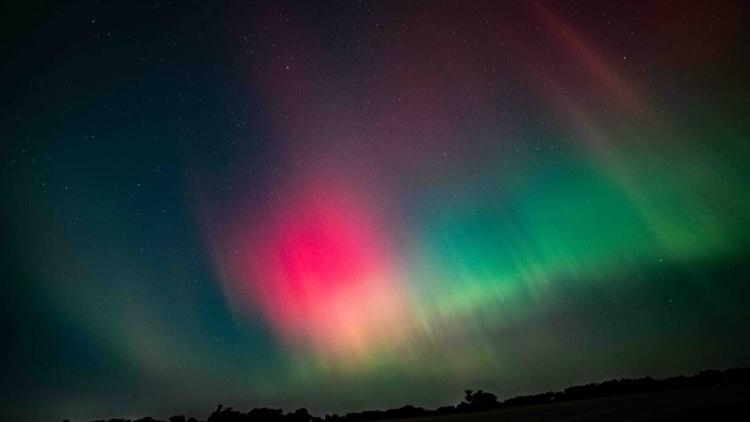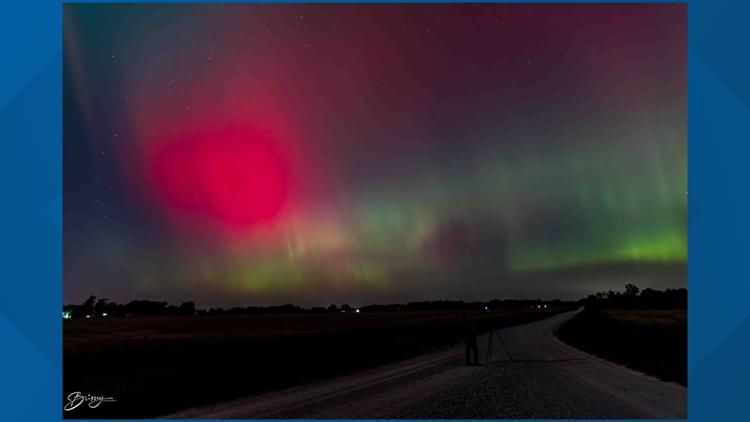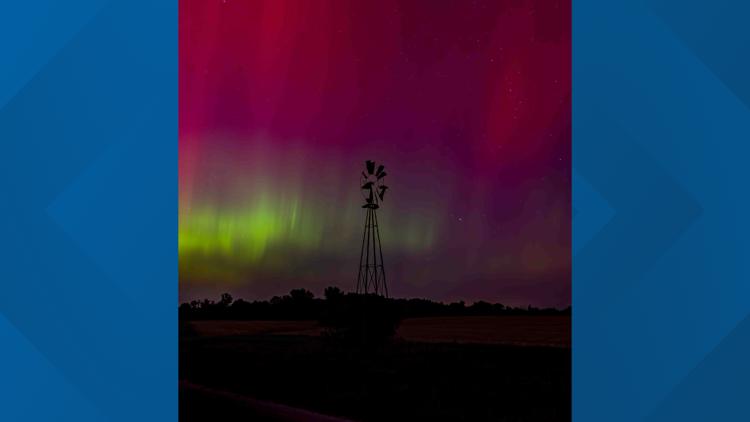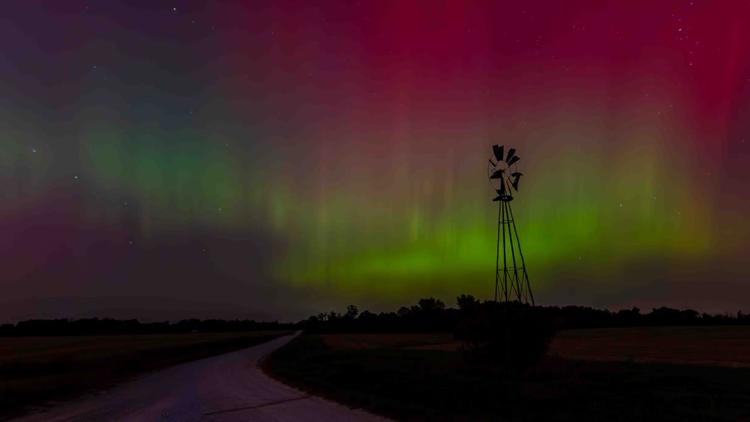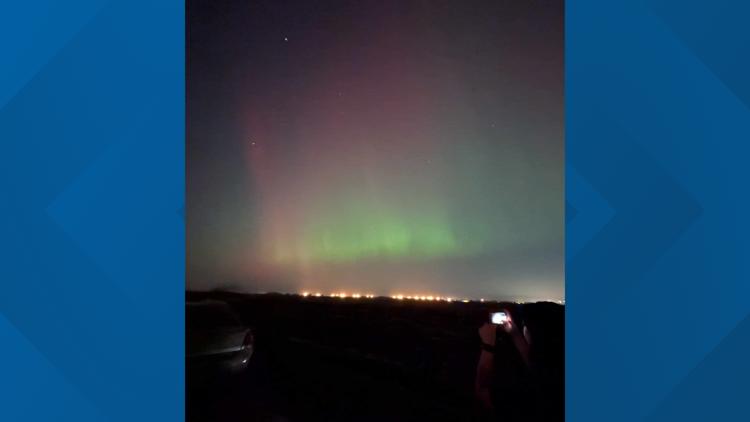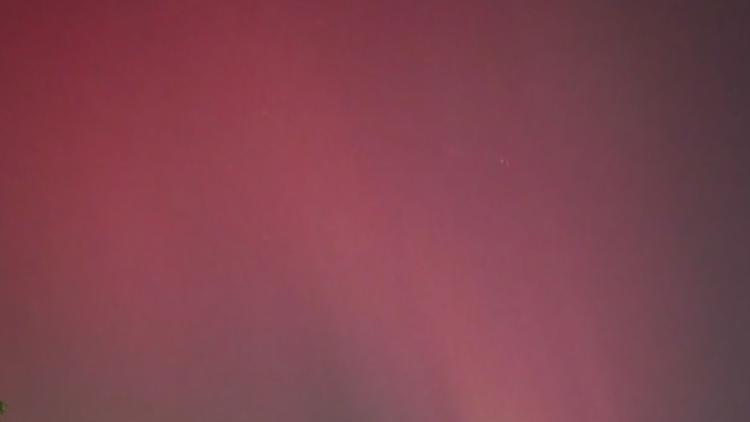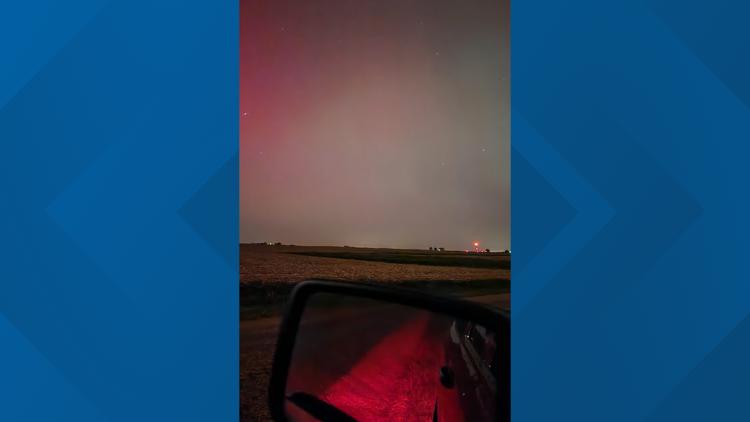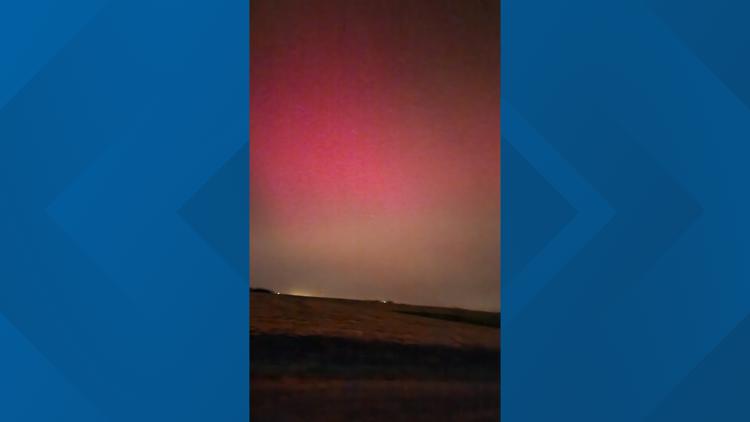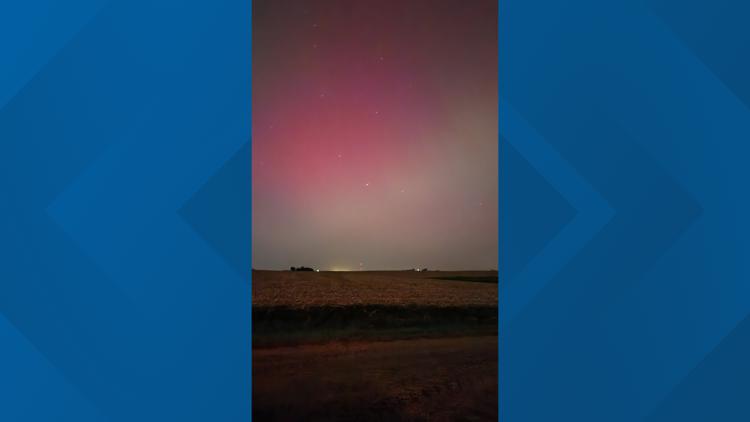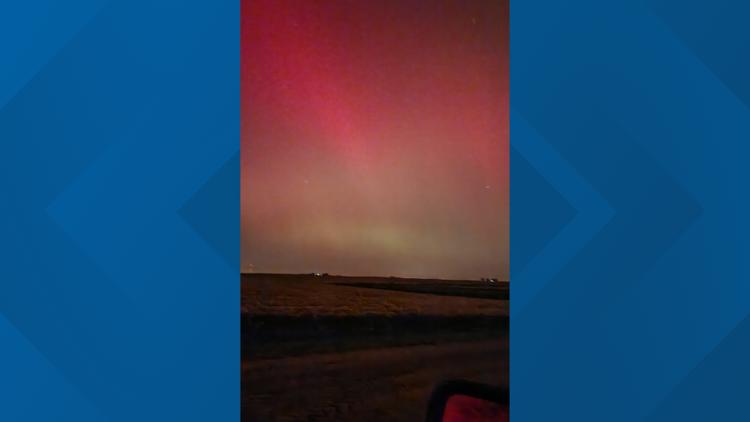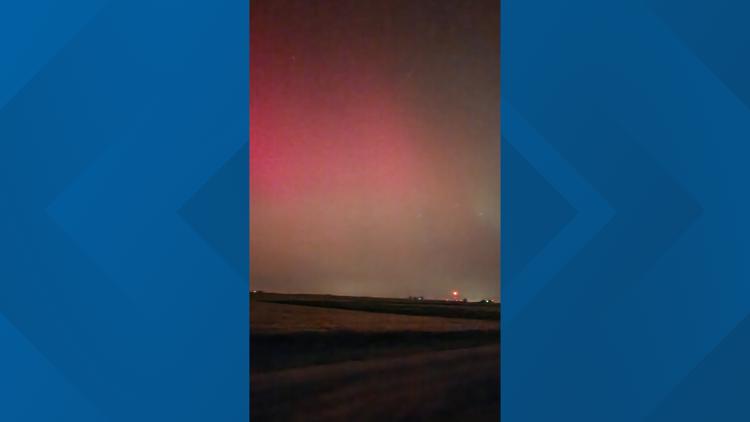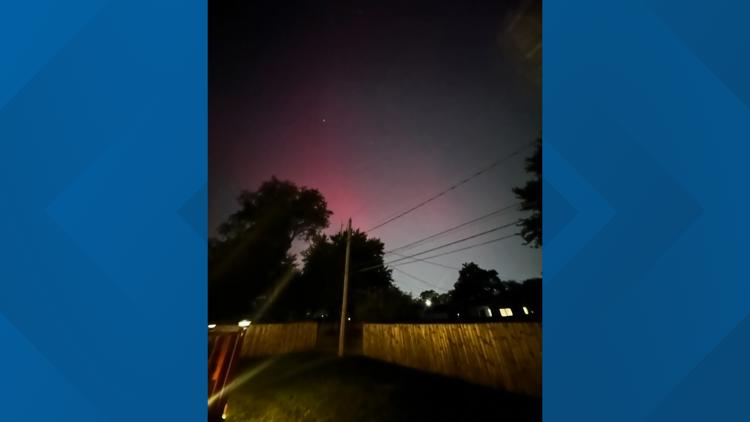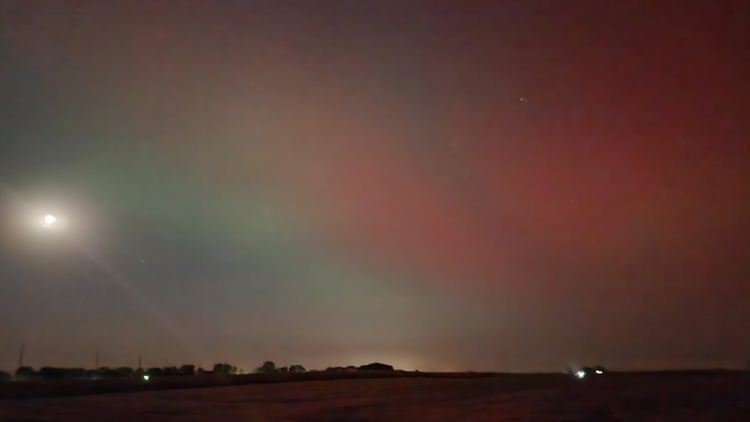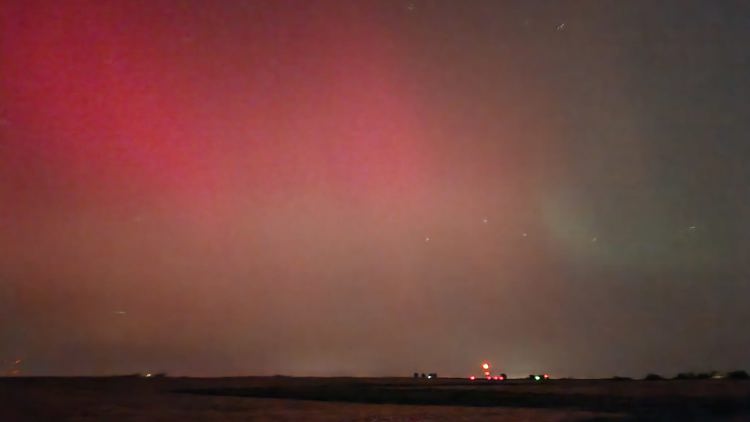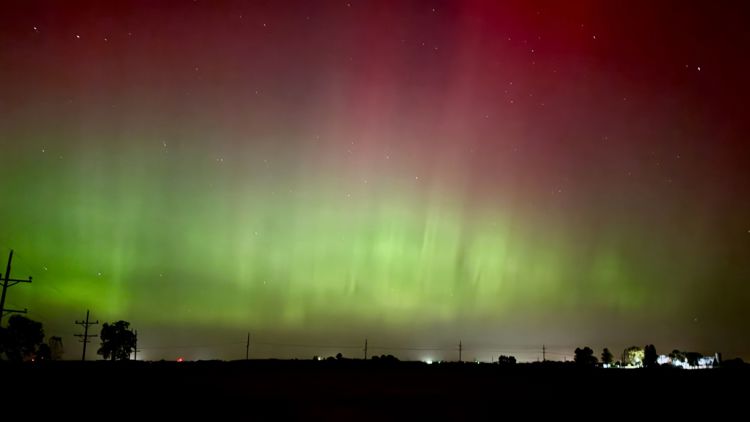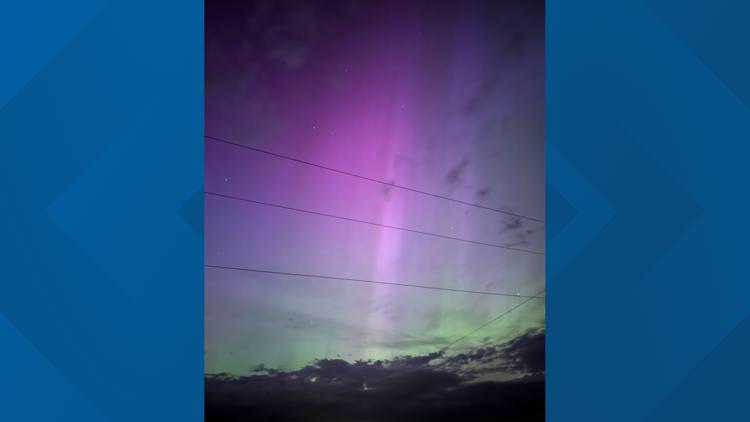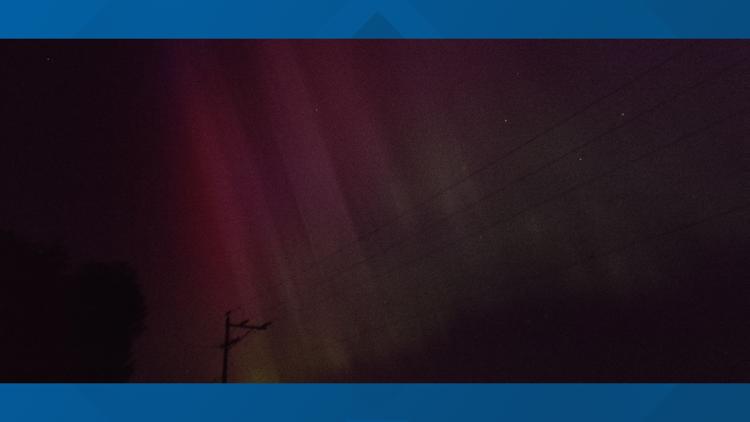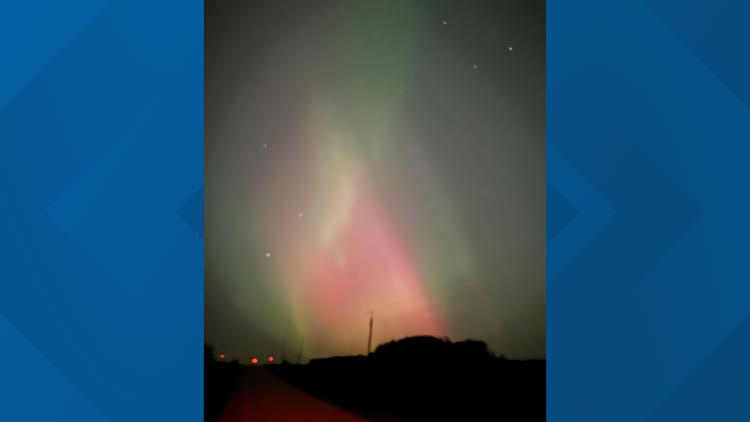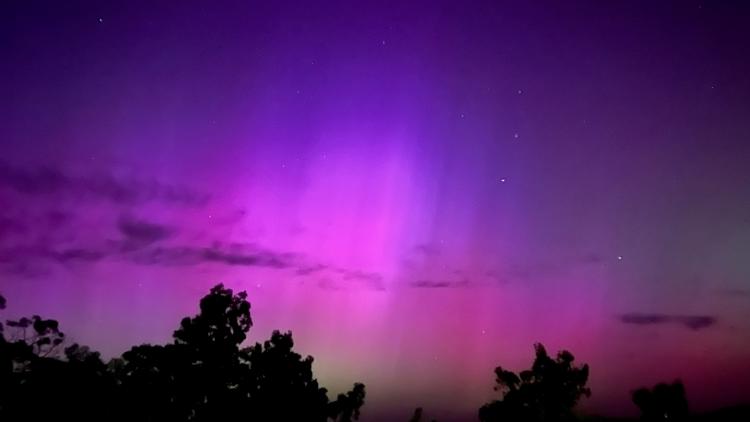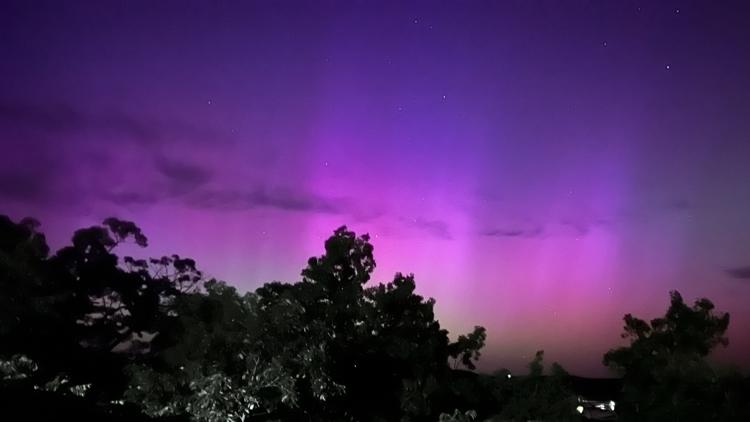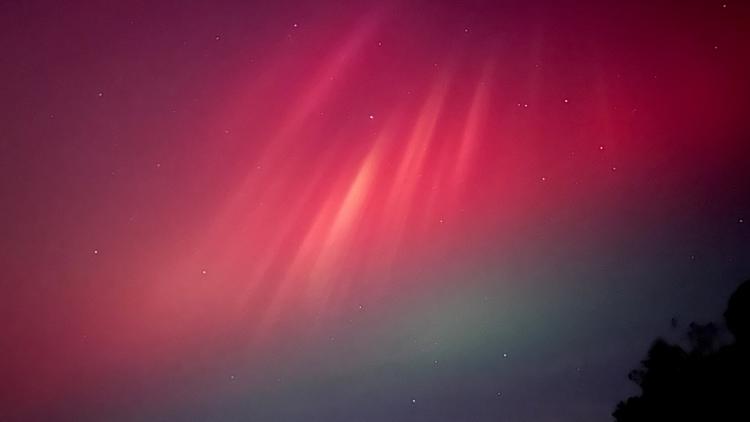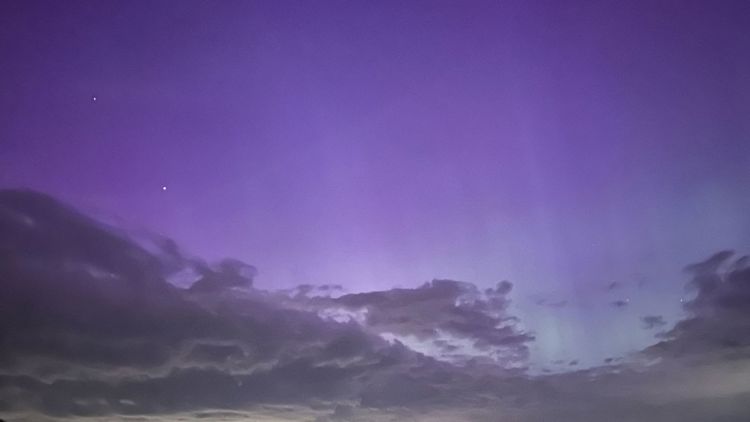Northern lights views from around the Quad Cities region
MOLINE, Ill. — Residents living in the northern part of the contiguous United States might have a chance to see the northern lights on Thursday night, including in Iowa and Illinois.
The National Oceanic and Atmospheric Administration (NOAA) issued a severe geomagnetic storm watch for Thursday night into Friday after an outburst from the sun was detected earlier this week. Such a storm could temporarily disrupt power and radio signals. It could also bring the northern lights farther south, making them visible once again to many of our hometowns.
Forecasters do not expect the latest solar storm to surpass the one that slammed Earth in May, which was the strongest in more than two decades. But they won't know for sure until it's just 1 million miles (1.6 million kilometers) away, where spacecraft can measure it.
Will I be able to see the northern lights tonight?
The northern lights will likely be visible in all of Iowa and the northern part of Illinois, according to NOAA. However, the chances of seeing the phenomenon are significantly stronger for those in the Arctic Circle.


What time will the northern lights be visible?
The Kp-index, the zero to nine scale used to determine the magnitude of geomagnetic storms, indicates auroral activity will range from five to eight Thursday night and Friday morning.
Despite earlier activity, it will be difficult to see anything until the sun sets. Therefore, the best viewing time is between 7 p.m. and 3 a.m.

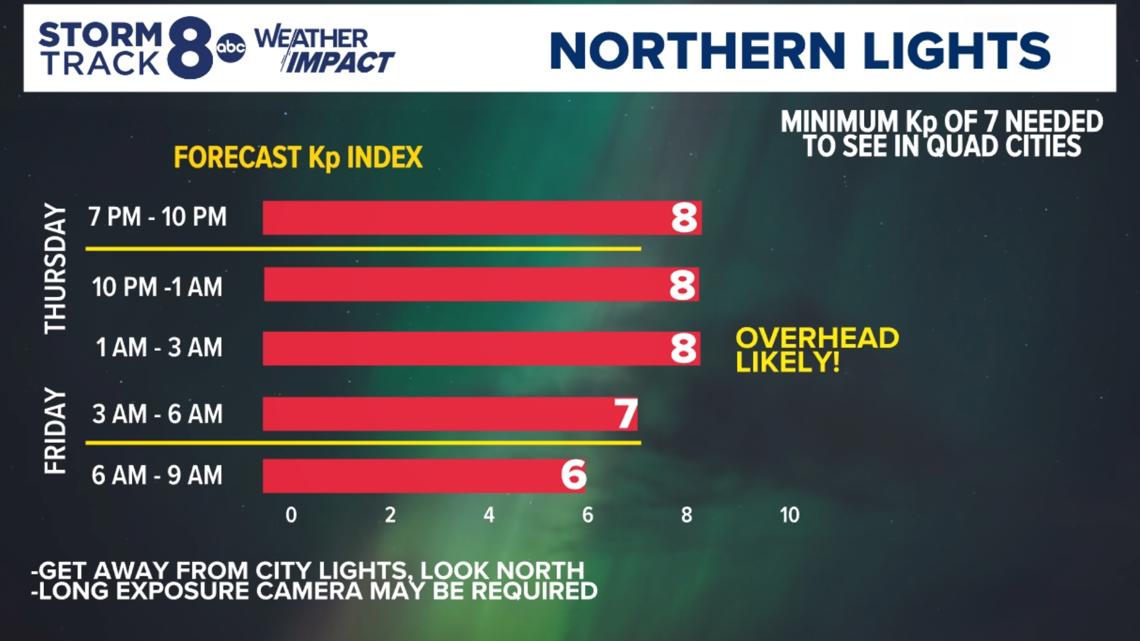
How can I see the northern lights tonight?
For the best viewing conditions, people should travel north to areas with less light pollution and a clear view of the horizon.
There are several sources people can use to find the best location to see these auroras.
The NOAA Space Weather Prediction Center provides daily aurora forecasts that showcase how far south it will be and the likelihood the northern lights will be visible. Apps like My Aurora Forecast use a user's location to find an aurora nearby and ping them when conditions are optimal.
Related Articles
May's solar storm produced dazzling auroras across the Northern Hemisphere and resulted in no major disruptions. The sun is near the peak of its current 11-year cycle, sparking all the recent solar activity.
Here's what News 8 viewers captured during May's solar storm.

